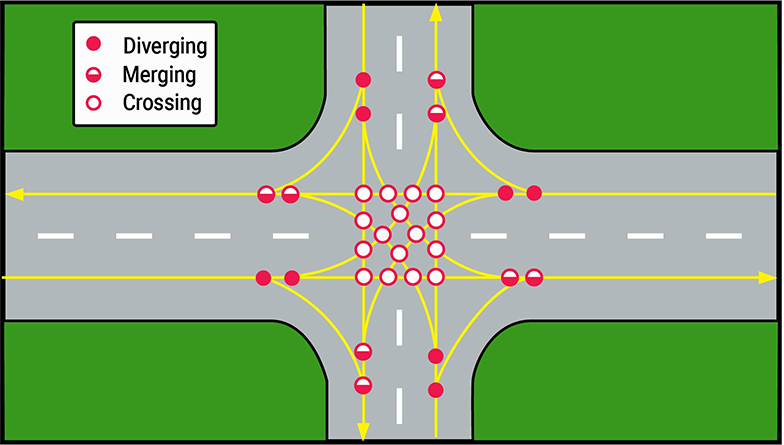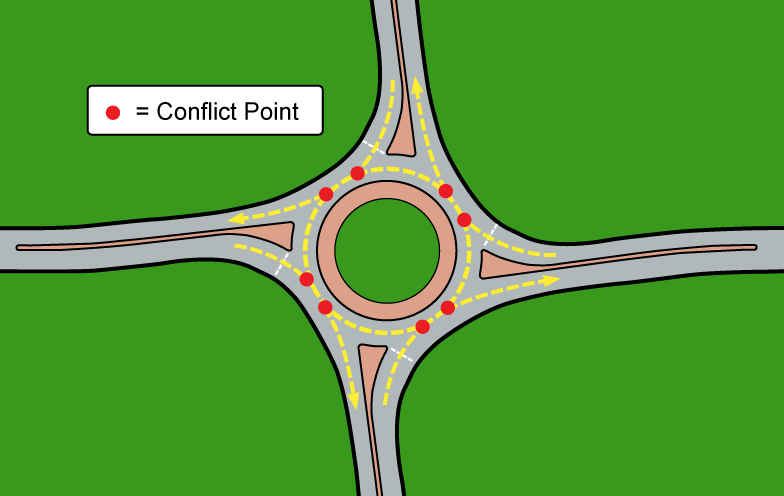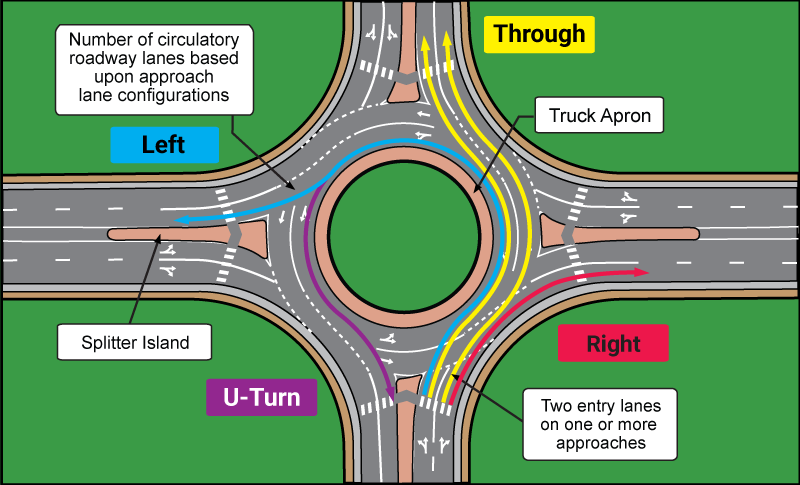- Expand Driving Safely
- Impaired Driving
- Child Passenger Safety
- Distracted Driving
- Drowsy Driving
- Motorcycle/Moped Driving Safety
- Non-Motor Vehicle Safety: ATV, Bike, Pedestrian, & Train
- Seat Belt/Occupant Protection Safety
- Older Drivers
- Expand Roundabouts
- Speed-Related Information
- Teen Drivers
- Work Zone Safety
- Winter Driving Safety
Roundabout Intersections
A modern roundabout is an unsignalized circular intersection engineered to maximize safety and minimize traffic delay.Roundabouts have gained support in the United States as drivers are becoming comfortable with their use and realize the increased safety they provide. They are also used to control traffic speeds in residential neighborhoods and are one of the safest types of intersection design. The Nebraska Department of Transportation is joining with the rest of the country in using a roundabout intersection more often as a means of managing traffic, reducing traffic conflicts, increasing intersection capacity, controlling vehicle speeds, and reducing crashes at intersections.
Yield: The “Golden Rule” of Modern Roundabouts
A modern roundabout is a circular intersection that converts all entering movements into right turns. Traffic signals or stop signs are replaced by yield signs at every entrance. All motorists entering a roundabout must yield to the circulating traffic, who has the right-of-way. An approaching motorist has to wait for a safe gap to appear in the flow of traffic before entering. This yield-at-entry rule keeps traffic from locking up and allows free flow of traffic. Emergency vehicles always have the right-of-way. If you have not entered the roundabout, pull over and allow the emergency vehicle to pass. If you are already in the roundabout, continue to your exit and pull over beyond the splitter island to allow the emergency vehicle to pass.
Why Use a Roundabout?
- Safety – Roundabouts have been shown to reduce injury accidents by 75% and fatal accidents by as much as 90%. The reduction in accidents is attributed to slower speeds and reduced number of conflict points. (See Figures 1A & 1B)
- Traffic Calming – Reduces vehicular speeds.
- Low Maintenance – Maintenance costs associated with traffic signals are eliminated which amount to approximately $3,500 - $5,000 per year per intersection.
- Reduced Delay – By yielding at the entry rather than stopping and waiting for a green light, delay is significantly reduced.
- Capacity – Intersections with a high volume of left turns are better handled by a roundabout than a multi-phased traffic signal.
- Environmental – A reduction in delay corresponds to a decrease in fuel consumption and air pollution.
- Truck Operations – Modern roundabouts are designed to accommodate tractor-trailer vehicles through the use of truck aprons. The truck apron is a raised section of pavement around the central island with a mountable curb which allows for the back wheels of larger vehicles to travel over.
- Pedestrians – Low speeds improve bicycle and pedestrian safety at roundabouts. The splitter islands provide pedestrian refuge and shorter one-directional traffic crossing.
- Aesthetics – The central island provides the opportunity to beautify the intersection with landscaping.


How to Drive a Roundabout
As you approach a roundabout there will be a YIELD sign and dashed yield line. Slow down, watch for pedestrians and bicyclists, and be prepared to stop if necessary. Before you enter, yield to circulating traffic on the left, but do not stop if it is clear.
A conventional roundabout will have chevrons or arrow mounted in the center island. They help guide traffic and indicate that you must drive to the right of the center island. Upon passing the street prior to your exit, turn on your right turn signal and watch for pedestrians and bicyclists as you exit.Left turns and U-Turns are completed by traveling around the center island. (See Figures 3 & 4 for single-lane and two-lane roundabout)


General Information About How Roundabouts
Work to Save Lives, Save Time, and Save $
The Truck Apron -
How Roundabouts Are Used by Large Vehicles
